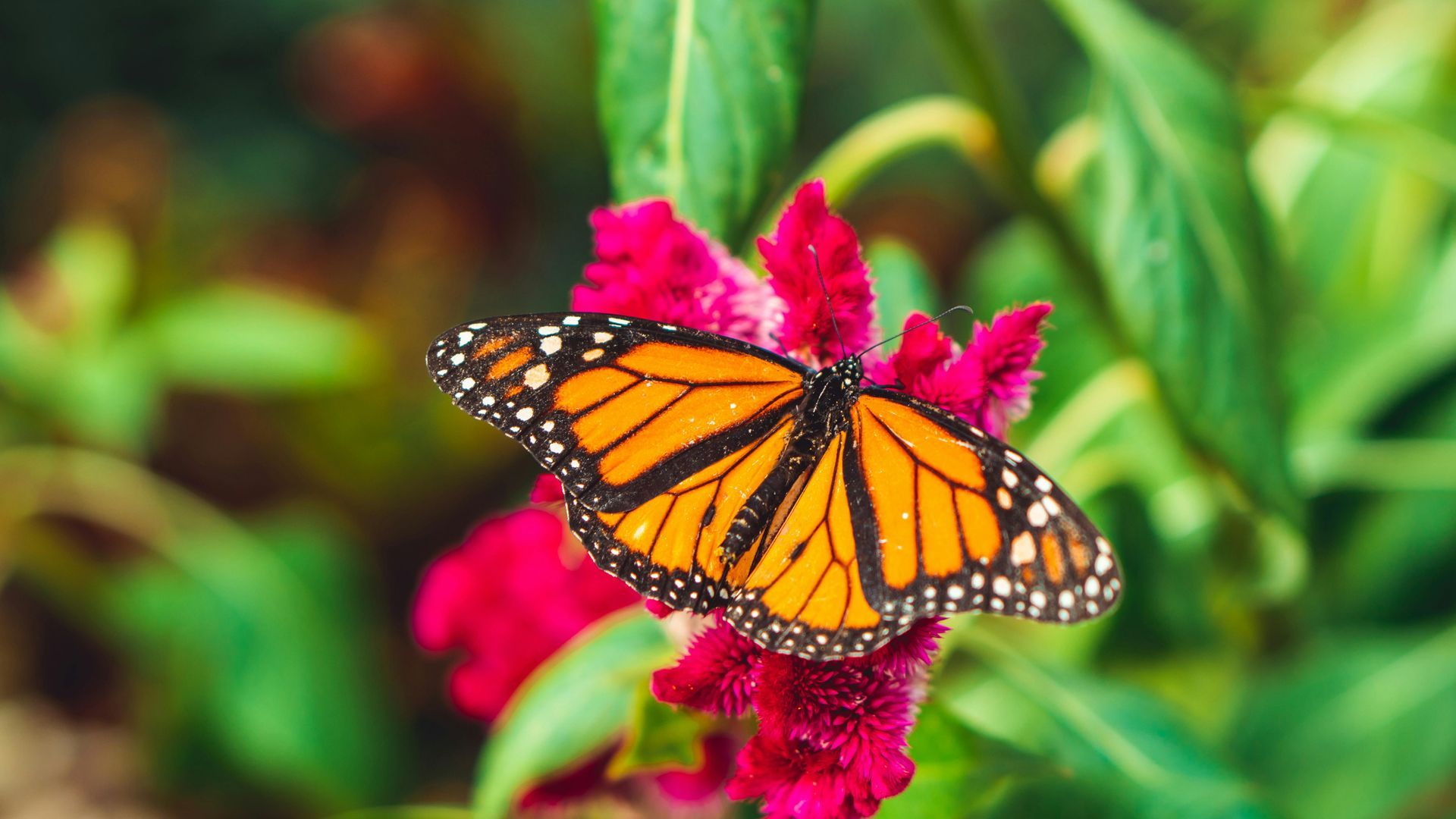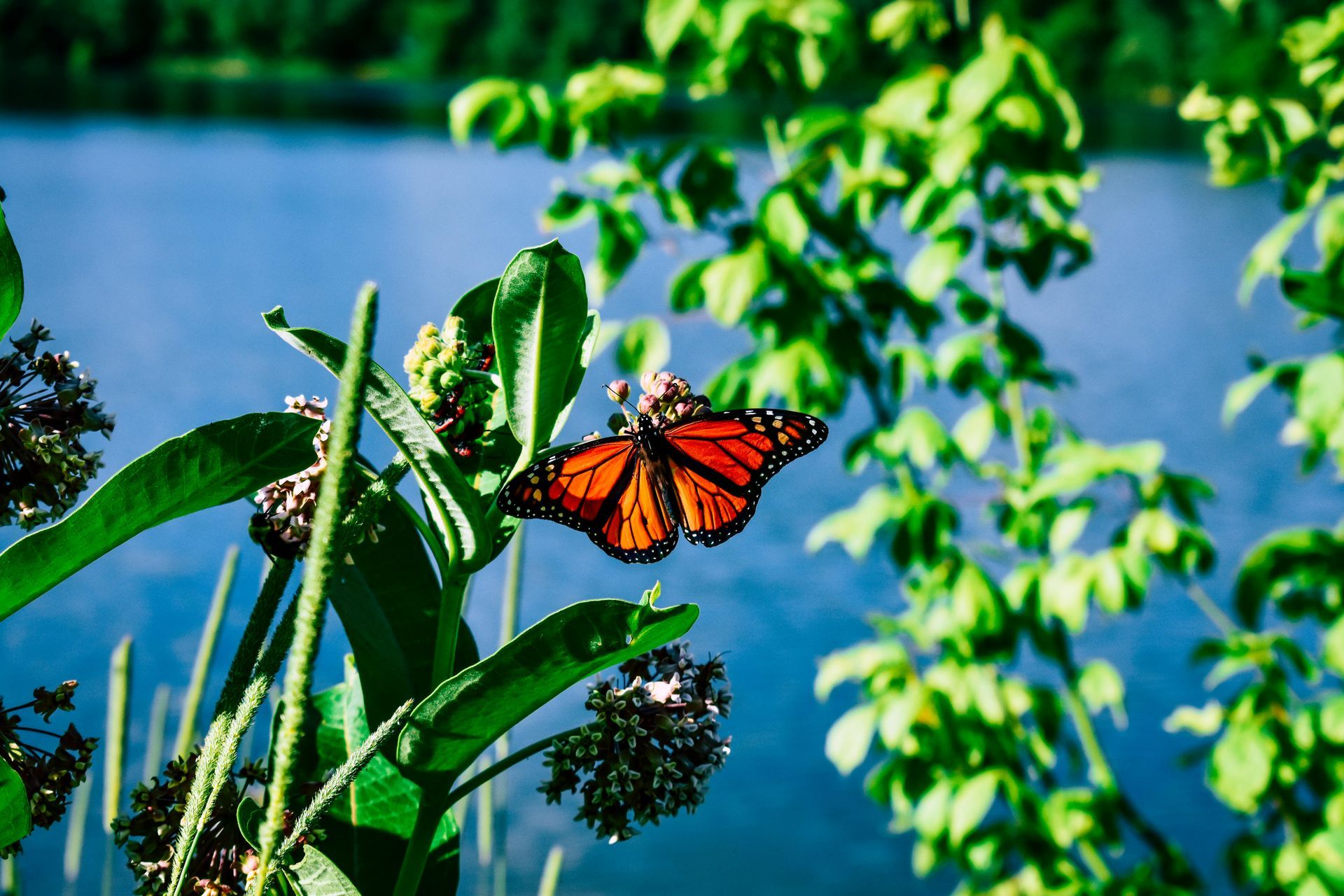The Monarch Butterfly is one of the most recognizable and iconic insects in North America, known for its striking orange and black wings and incredible migration. Monarchs are found across the United States, Mexico, and Canada, thriving in open fields, meadows, and gardens. They play a critical role in pollination, supporting various flowering plants.
Adult Monarchs have a wingspan of 3-4 inches and are easily identified by their bright orange wings bordered with black and dotted with white spots. Monarch caterpillars are equally distinctive, featuring black, white, and yellow stripes. Monarchs feed on nectar from a wide range of flowers, while their larvae feed exclusively on milkweed plants, which provide vital nutrients and chemical defenses.
Monarchs are famous for their migration, traveling up to 3,000 miles to overwinter in Mexico and California. Females lay eggs on milkweed, and the resulting caterpillars undergo metamorphosis into butterflies within about four weeks. Adult Monarchs live for only a few weeks, except for the migratory generation, which can live up to eight months.
Natural predators include birds, spiders, and wasps, though the toxic compounds from milkweed protect Monarchs to some extent. Human-related threats such as habitat loss, pesticide use, and climate change have caused significant declines in their populations.

For your safety and the well-being of wildlife, please observe animals from a distance and avoid touching or disturbing them. If you encounter an animal that appears injured or in distress, contact a licensed wildlife rescue organization for guidance before intervening.
Found An Animal? Not sure how to help a wild animal in need? Learn when to step in, who to call, and how to help safely.
Did You Know?
- Monarchs are the only butterfly species known to make a two-way migration, similar to birds.
- Their migration covers up to 3,000 miles, with some individuals traveling from Canada to central Mexico.
- Monarch caterpillars can eat up to 200 times their body weight in milkweed during their larval stage.
- The bright orange coloration of Monarchs warns predators that they are toxic.
- Monarchs use the sun’s position and an internal compass to navigate during migration.
- Some Monarchs have been known to travel as much as 100 miles in a single day.
- The Monarch’s body contains chemicals called cardenolides, which make them distasteful to most predators.
- Monarch butterflies can taste with their feet, allowing them to detect toxins in plants.
- Monarchs cluster together in large groups during the winter to conserve heat and protect each other.
Problems Faced In The Wild
- Habitat Loss: Urban development reduces the availability of milkweed and nectar plants.
- Pesticide Use: Chemicals harm both caterpillars and adult butterflies, reducing their survival rates.
- Climate Change: Altered weather patterns impact migration timing and overwintering sites.
- Loss of Milkweed: Widespread eradication of milkweed, the only host plant for Monarch larvae, threatens their populations.
- Predation: Birds, spiders, and wasps prey on Monarchs at various life stages.
- Disease: Monarchs are susceptible to infections like OE (Ophryocystis elektroscirrha), which weakens their ability to fly.
Tips For Cohabitation
- Plant Native Milkweed: Support Monarch reproduction by providing essential host plants.
- Provide Nectar Sources: Grow a variety of native flowering plants to offer food for adult butterflies.
- Avoid Pesticides: Use natural pest control methods to protect Monarchs and other pollinators.
- Create Butterfly Gardens: Designate safe spaces with host and nectar plants. If planting Milkweed, ensure it is the species native to your area.
- Participate in Citizen Science: Monitor and report Monarch sightings to help track their migration.
- Educate Others: Share information about Monarch conservation and how to create butterfly-friendly habitats



